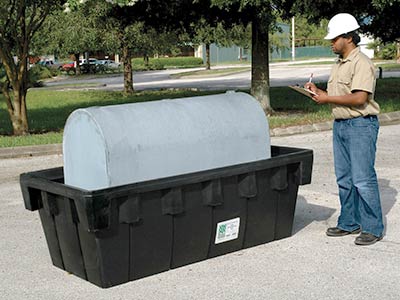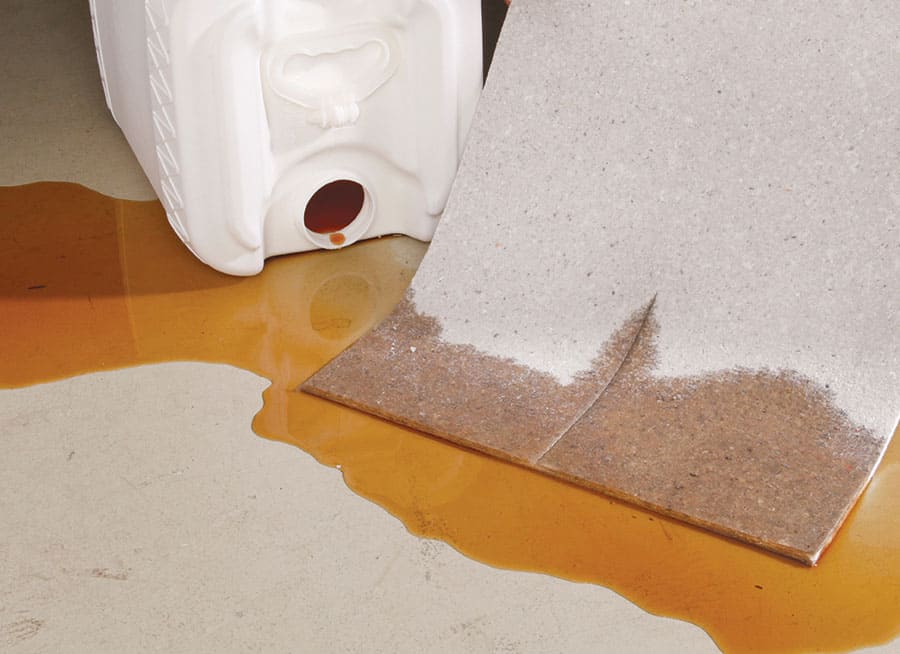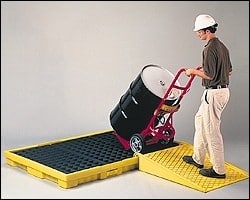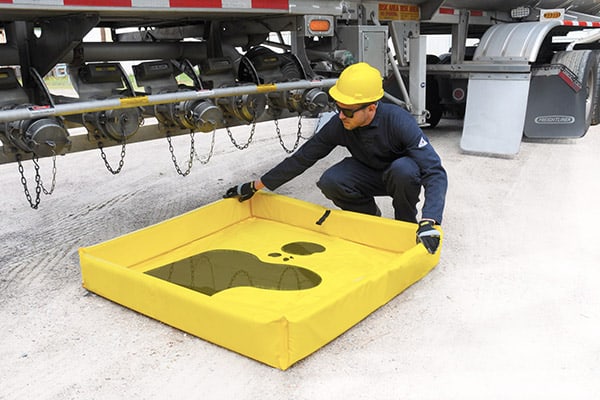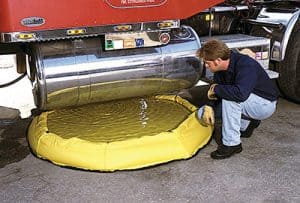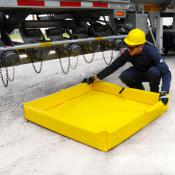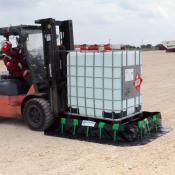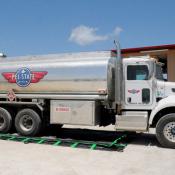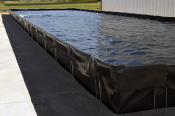In industries where the storage and handling of hazardous substances are integral to daily operations, maintaining safety and compliance is paramount. One important aspect of this is the use of secondary containment tanks. These specialized structures provide an additional layer of protection by preventing leaks, spills, and releases that could harm the environment and endanger human health.
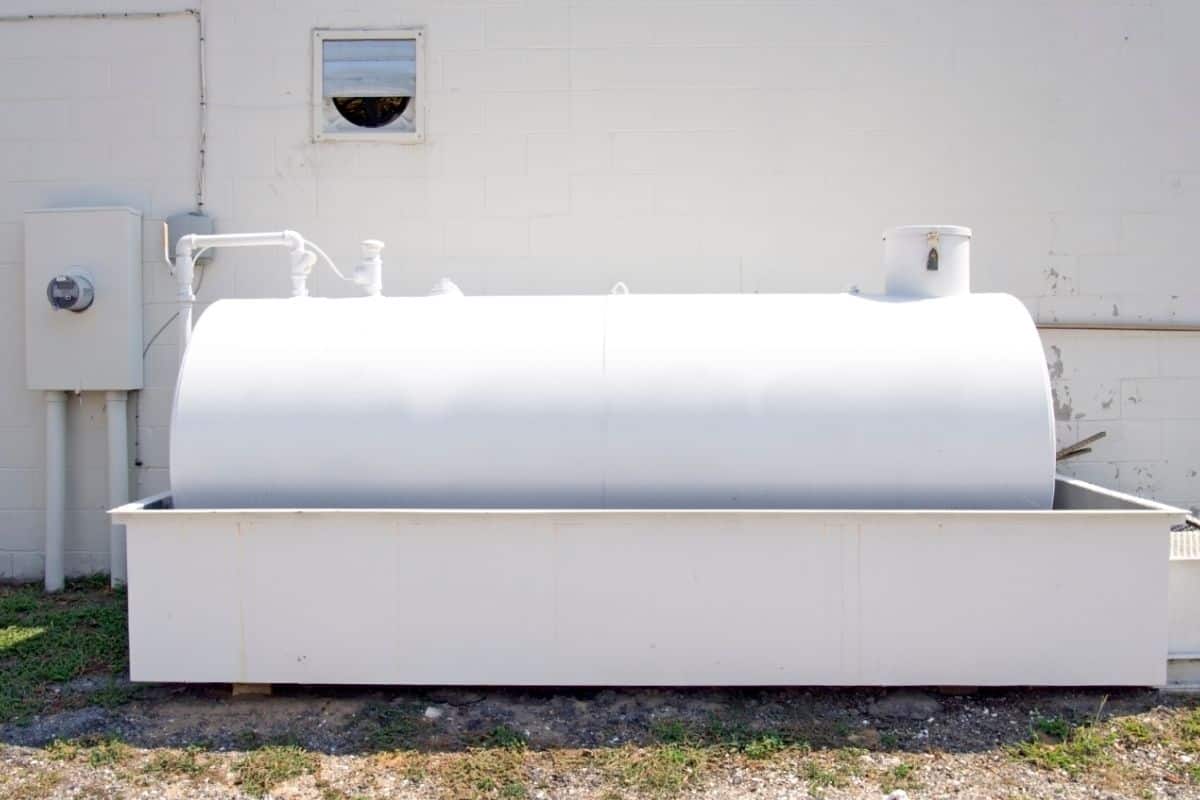
In this post, we’ll delve into the concept of secondary containment tanks, their purpose, benefits, and the relevant federal regulations businesses must adhere to. So, if you’re curious about why secondary containment for tanks or other large storage containers matters, read on!
Defining and Understanding the Purpose of Secondary Containment Tanks
A secondary containment tank is a structure or device designed to contain leaks, spills, and overflows that may occur within a primary storage vessel. It serves as a safeguard, providing an extra layer of protection and allowing for prompt response and cleanup in the event of a containment breach.
Should the primary storage container fail for any reason, then the tank also has a secondary barrier: think of a tank inside another tank. This design helps effectively contain hazardous substances to avoid potentially polluting the surrounding environment or harming people.
One example is a spill berm barrier around an above-ground storage tank that houses a petroleum product such as diesel fuel. If the storage tank encounters a puncture or other damage, the secondary tank will hold the spillage and prevent it from leaching into the surrounding location.
Regulations and Guidelines for Secondary Containment Tanks
To maintain safety and environmental compliance, businesses must adhere to federal regulations concerning secondary containment. Regulatory bodies, such as the Environmental Protection Agency (EPA), set standards that businesses must adhere to when handling hazardous materials.
Businesses need to stay up to date with the latest regulations and guidelines governing the use of secondary containment tanks. Failure to comply with these standards can result in severe consequences, including fines, penalties, and legal liabilities. Some of the key regulations and guidelines governing the use of secondary containment tanks include:
Spill Prevention, Control, and Countermeasure (SPCC)
The EPA’s SPCC rule mandates that certain facilities, such as those with a large oil storage capacity, develop and implement spill prevention plans. Secondary containment tanks—such as double-walled tanks or berms—are a crucial element of these plans, helping prevent oil spills and releases into navigable waters or adjoining shorelines. It is applicable for under- and above-ground storage tanks.
Resource Conservation and Recovery Act (RCRA)
Under the RCRA, businesses that handle hazardous waste must meet specific requirements, including proper containment. Secondary containment tanks are essential for storing and handling hazardous waste materials, reducing the risk of spills or leaks that could harm human health or the environment.
Occupational Safety and Health Administration (OSHA)
While OSHA does not specifically mandate secondary containment tanks, it requires employers to provide a safe workplace for their employees. Which includes specific guidelines for the storage and handling of hazardous materials.
National Fire Protection Association (NFPA)
The NFPA develops and publishes standards for fire protection and prevention. These standards include guidelines for the storage and handling of hazardous materials. NFPA standards often require the use of secondary containment tanks to mitigate the risk of fire and prevent the spread of hazardous materials. They provide specific requirements for the design, construction, and maintenance of secondary containment systems.
Common Types of Secondary Containment Tanks
Secondary containment tanks come in various types, each designed to meet specific requirements and industry standards. Your tank choice depends on factors such as the type of hazardous material being stored, the volume of storage, and the specific application.
The following list explains some of the common types of secondary containment systems:
Double-walled tanks
Double-walled tanks consist of an inner primary storage tank and an outer containment vessel. The space between the two walls acts as a secondary containment area in the event of a leak or spill. This design provides an extra layer of protection and allows for easy visual inspection of the containment area. Double-walled tanks are commonly used in industries that handle large volumes of hazardous materials, such as chemical plants and fuel storage facilities.
Berms and dikes
Berms and dikes are physical barriers constructed around storage areas to contain potential spills. They are often made of concrete, steel, or heavy-duty plastics and form a barrier that prevents hazardous materials from spreading. Berms and dikes are commonly used in industries that store liquids in bulk, such as oil refineries and chemical storage facilities. They are effective in containing spills and can be designed to accommodate specific storage volumes.
Spill containment pallets
Spill containment pallets are specialized platforms designed to hold drums, barrels, or containers. They are equipped with a sump or containment area that captures any leaks or spills, preventing them from spreading. Spill containment pallets are widely used in industries that handle smaller quantities of hazardous materials, such as laboratories and manufacturing facilities. They provide a cost-effective solution for containing spills in a compact and easy-to-maintain manner. See our previous post, 6 Pallets that Control Spills, to learn more.
Secondary Containment Tank Benefits
Secondary containment tanks offer numerous benefits to industries that handle hazardous materials. These benefits go beyond environmental compliance and extend to risk reduction, cost savings, and increased operational efficiency. Let’s explore some of the key advantages of utilizing secondary containment tanks:
1. Environmental Protection
Secondary containment tanks play a critical role in safeguarding the environment. By effectively containing hazardous substances due to spills or leaks, they minimize the risk of soil and groundwater contamination, protecting ecosystems and local water sources. This is particularly important for businesses handling oil, chemicals, fuels, and other potentially harmful substances.
2. Ensuring Human Health and Safety
By preventing accidental releases of hazardous materials, secondary containment tanks help ensure human health and safety. Unforeseen releases can lead to fires, explosions, or the release of toxic gases, endangering workers and nearby communities. By confining potential spills within a secondary containment system, businesses can mitigate these risks and ensure a safer working environment.
Employers must assess potential hazards, including the risk of spills or releases, and take appropriate measures to mitigate these risks. Secondary containment tanks are a recognized best practice for preventing and controlling spills in various industries.
3. Cost Savings and Operational Efficiency
Implementing secondary containment tanks can lead to significant cost savings for businesses. By preventing spills and leaks, companies avoid expensive cleanup operations, legal liabilities, and potential lawsuits or fines.
Moreover, secondary containment tanks allow for efficient monitoring and detection of leaks, enabling prompt response and mitigation measures. Including the potential to recover and re-use spilled materials. All of which helps to minimize downtime, prevent production interruptions, damage to infrastructure, and maintain operational efficiency.
Concluding Thoughts
Secondary containment tanks are indispensable for businesses that handle hazardous substances, providing additional protection against unforeseen events like spills and releases.
By complying with federal regulations, companies can prioritize safety, protect the environment, and prevent costly fines and penalties. The benefits of secondary containment tanks go beyond environmental compliance and extend to risk reduction, cost savings, and increased operational efficiency.
Contact AbsorbentsOnline today to learn more about secondary containment. We offer a wide range of containment tanks and spill response products to help your business meet regulatory requirements and maintain a safe workplace.
